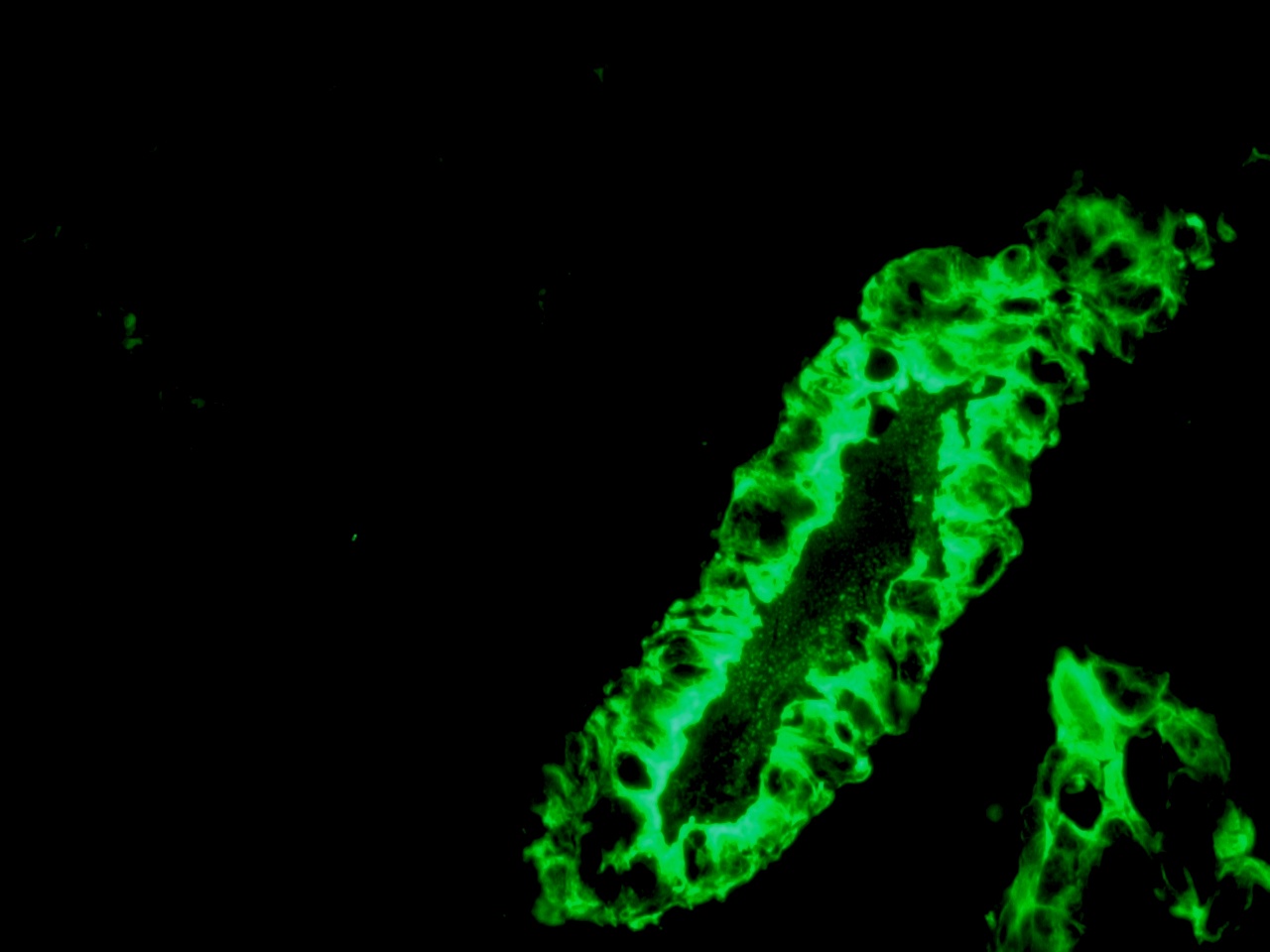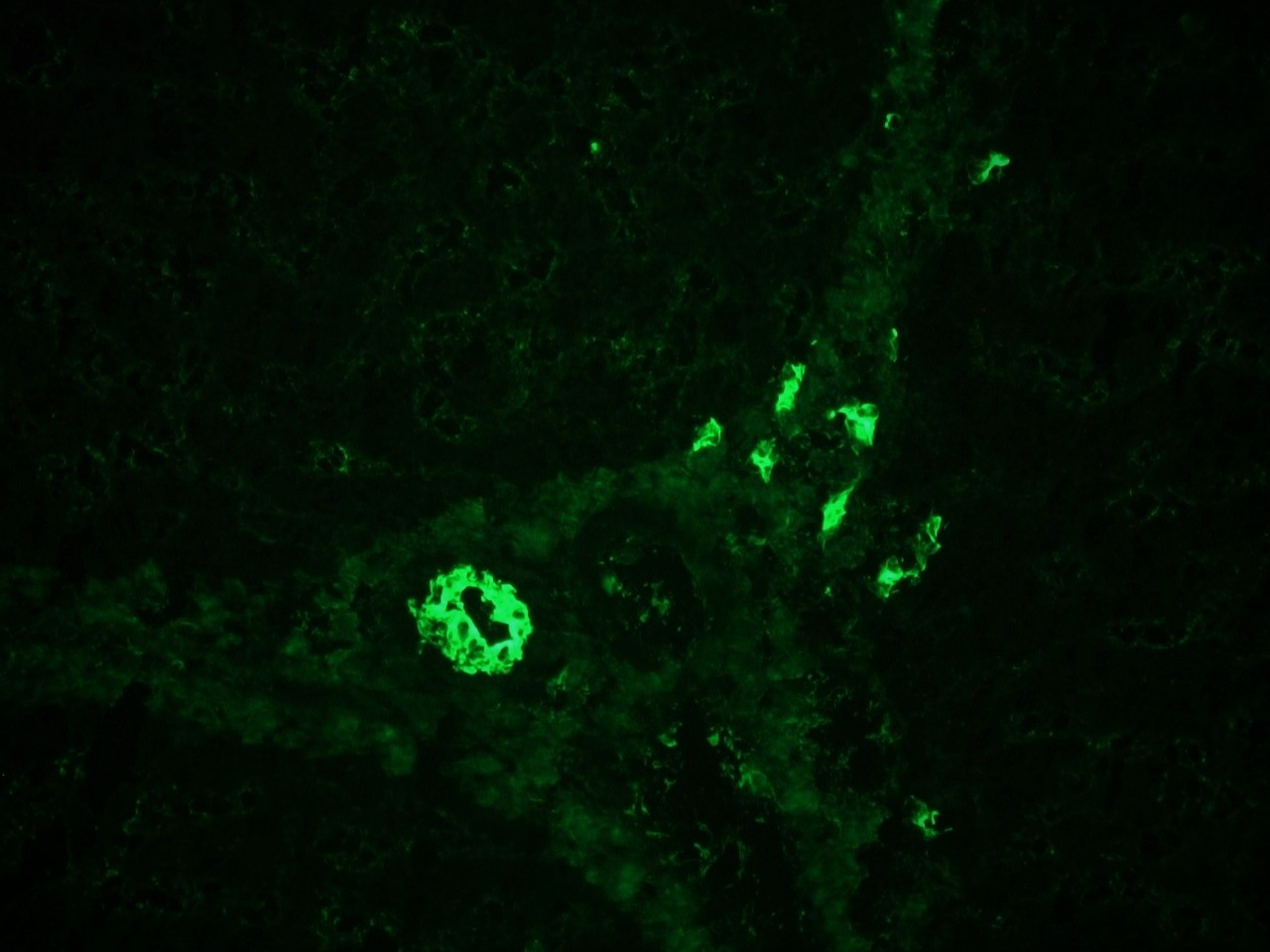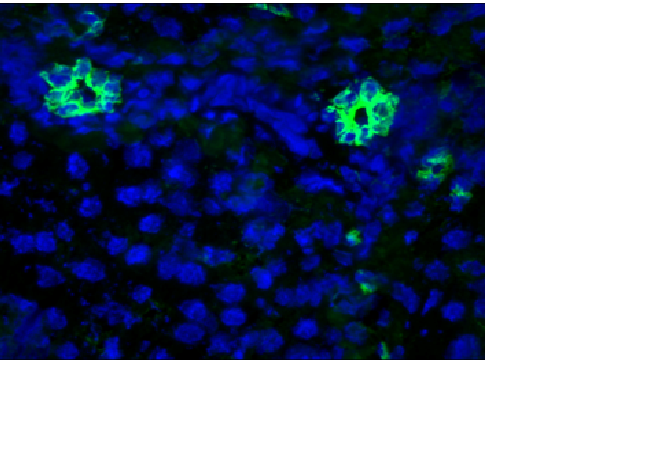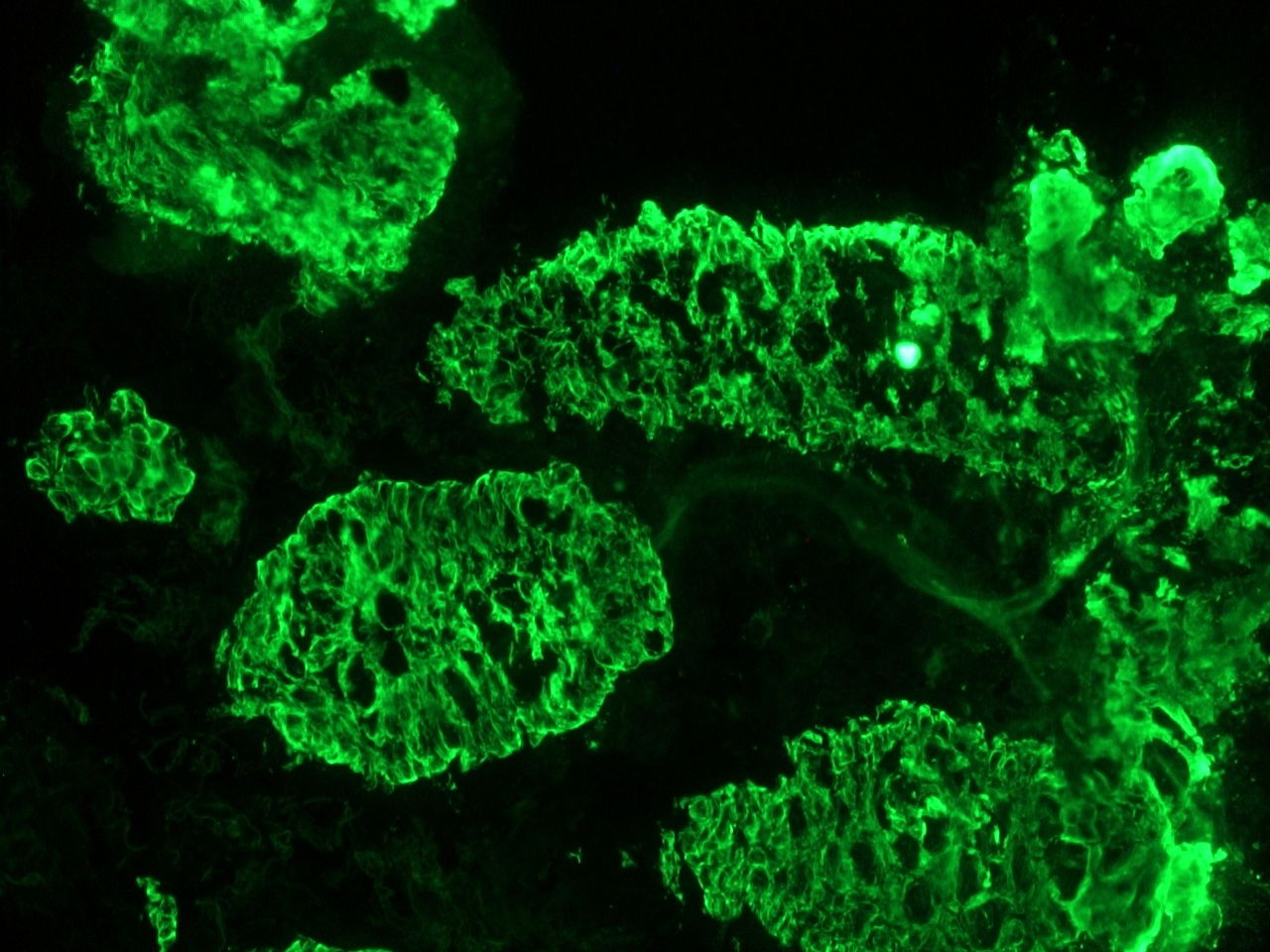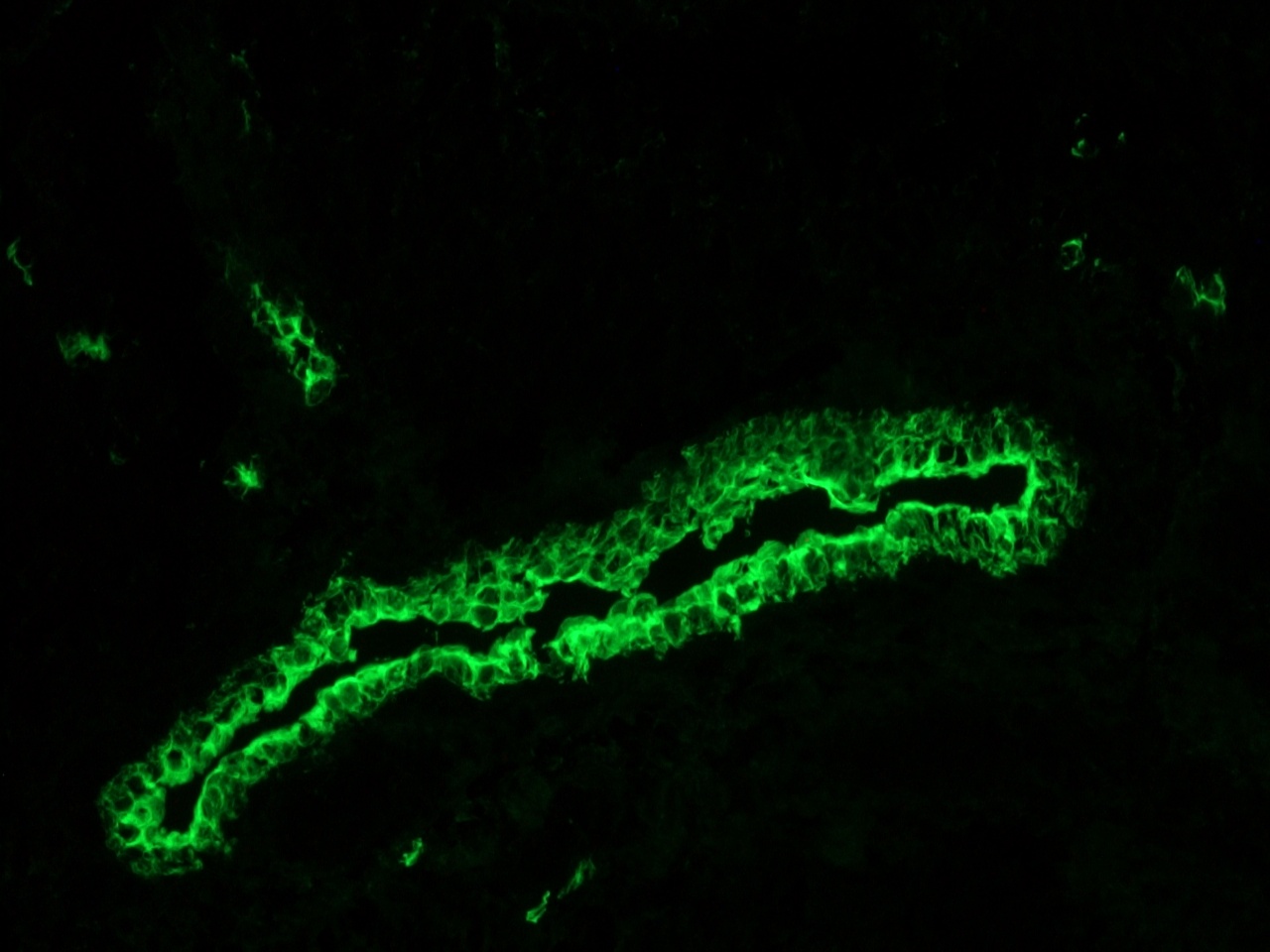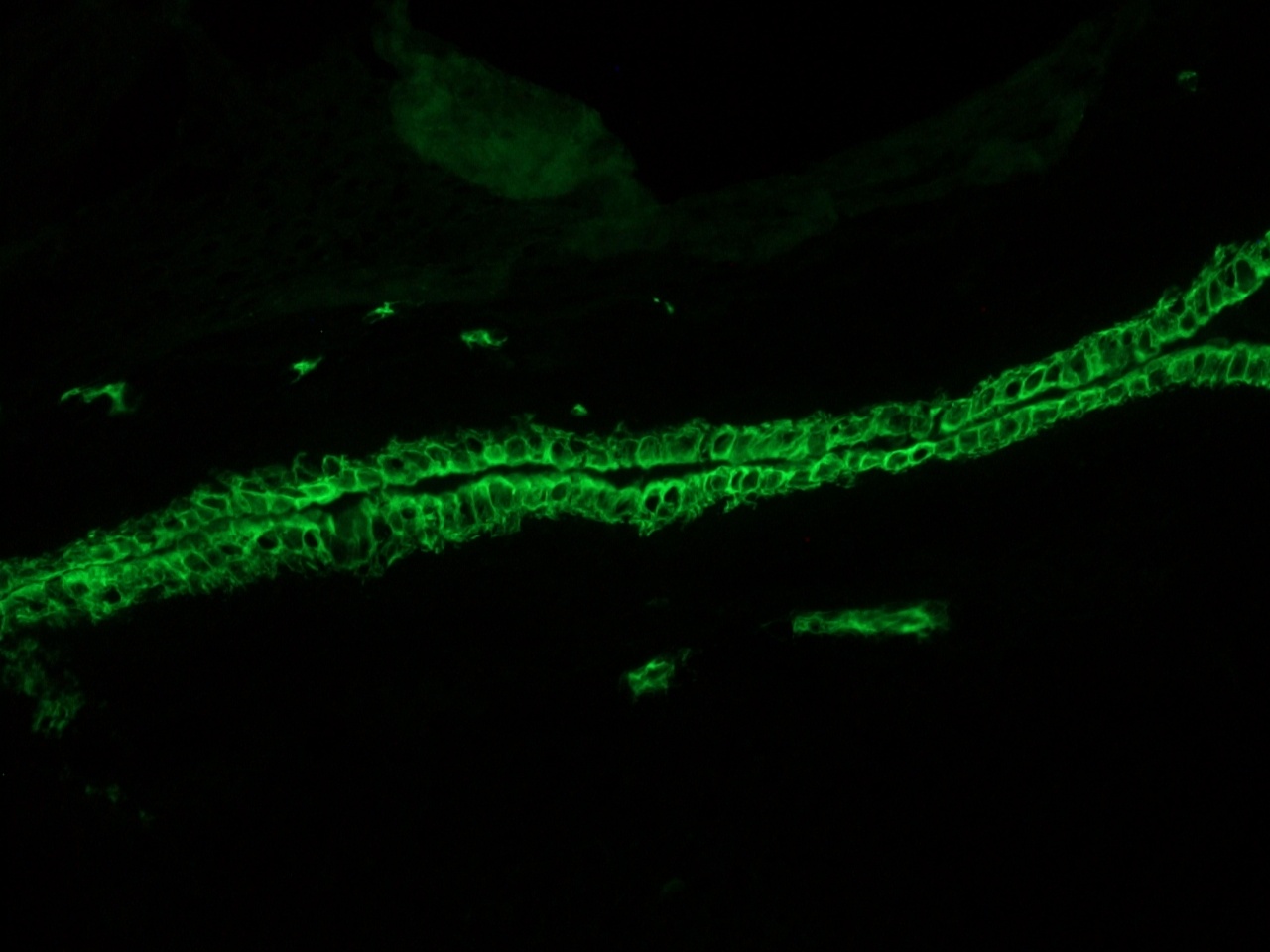Catalogue

Mouse anti Cytokeratin 7 / Keratin K7
Catalog number: MUB0315P| Clone | RCK105 |
| Isotype | IgG1 |
| Product Type |
Primary Antibodies |
| Units | 0.1 mg |
| Host | Mouse |
| Species Reactivity |
Canine Caprine Feline Hamster Human Mouse Rat Zebrafish |
| Application |
Flow Cytometry Immunocytochemistry Immunohistochemistry (frozen) Western Blotting |
Background
Cytokeratins are a subfamily of intermediate filament proteins and are characterized by a remarkable biochemical diversity, represented in Human epithelial tissues by at least 20 different polypeptides. They range in molecular weight between 40 kDa and 68 kDa and isoelectric pH between 4.9 – 7.8. The individual Human Cytokeratins are numbered 1 to 20. The various epithelia in the Human body usually express Cytokeratins which are not only characteristic of the type of epithelium, but also related to the degree of matuRation or differentiation within an epithelium. Cytokeratin subtype expression patterns are used in the distinction of different types of epithelial malignancies. The Cytokeratin antibodies are not only of assistance in the differential diagnosis of tumors using immunohistochemistry on tissue sections, but are also a useful tool in cytopathology and flow cytometric assays.
Source
RCK105 is a mouse monoclonal IgG1 antibody derived by fusion of SP2/0-Ag14 mouse myeloma cells with spleen cells from a BALB/c mouse immunized with cytokeratins from the human bladder carcinoma cell line T24.
Product
Each vial contains 100 ul 1 mg/ml purified monoclonal antibody in PBS containing 0.09% sodium azide.
Formulation: Each vial contains 100 ul 1 mg/ml purified monoclonal antibody in PBS containing 0.09% sodium azide.
Specificity
RCK105 reacts exclusively with Cytokeratin 7 which is present in a subgroup of glandular epithelia and their tumors, as well as transitional epithelium and transitional carcinoma.
Applications
RCK105 is suitable for immunoblotting, immunocytochemistry on permeabilised cells, immunohistochemistry on frozen tissues and flow cytometry. Optimal antibody dilution should be determined by titration; recommended range is 1:100 – 1:200 for flow cytometry and immunohistochemistry with avidin-biotinylated Horseradish peroxidase complex (ABC) as detection reagent, and 1:100 – 1:1000 for immunoblotting applications.
Storage
The antibody is shipped at ambient temperature and may be stored at +4°C. For prolonged storage prepare appropriate aliquots and store at or below -20°C. Prior to use, an aliquot is thawed slowly in the dark at ambient temperature, spun down again and used to prepare working dilutions by adding sterile phosphate buffered saline (PBS, pH 7.2). Repeated thawing and freezing should be avoided. Working dilutions should be stored at +4°C, not refrozen, and preferably used the same day. If a slight precipitation occurs upon storage, this should be removed by centrifugation. It will not affect the performance or the concentration of the product.
Caution
This product is intended FOR RESEARCH USE ONLY, and FOR TESTS IN VITRO, not for use in diagnostic or therapeutic procedures involving humans or animals. It may contain hazardous ingredients. Please refer to the Safety Data Sheets (SDS) for additional information and proper handling procedures. Dispose product remainders according to local regulations.This datasheet is as accurate as reasonably achievable, but Nordic-MUbio accepts no liability for any inaccuracies or omissions in this information.
References
1. Ramaekers, F., Huysmans, A., Schaart, G., Moesker, O., and Vooijs, P. (1987). Tissue distribution of keratin 7 as monitored by a monoclonal antibody, Exp Cell Res 170, 235-49.
2. Smedts, F., Ramaekers, F., Robben, H., Pruszczynski, M., van Muijen, G., Lane, B., Leigh, I., and Vooijs, P. (1990). Changing patterns of keratin expression during progression of cervical intraepithelial neoplasia, Am J Pathol 136, 657-68.
3. Schaafsma, H. E., Ramaekers, F. C., van Muijen, G. N., Lane, E. B., Leigh, I. M., Robben, H., Huijsmans, A., Ooms, E. C., and Ruiter, D. J. (1990). Distribution of cytokeratin polypeptides in human transitional cell carcinomas, with special emphasis on changing expression patterns during tumor progression, Am J Pathol 136, 329-43.
4. Ramaekers, F., van Niekerk, C., Poels, L., Schaafsma, E., Huijsmans, A., Robben, H., Schaart, G., and Vooijs, P. (1990). Use of monoclonal antibodies to keratin 7 in the differential diagnosis of adenocarcinomas, Am J Pathol 136, 641-55.
5. Bauwens, L. J., De Groot, J. C., Ramaekers, F. C., Veldman, J. E., and Huizing, E. H. (1992). Expression of intermediate filament proteins in the adult Human vestibular labyrinth, Ann Otol Rhinol Laryngol 101, 479-86.
6. Smedts, F., Ramaekers, F., Troyanovsky, S., Pruszczynski, M., Link, M., Lane, B., Leigh, I., Schijf, C., and Vooijs, P. (1992). Keratin expression in cervical cancer, Am J Pathol 141, 497-511.
7. Ivanyi, D., Minke, J. M., Hageman, C., Groeneveld, E., and van Doornewaard, G. (1992). Patterns of expression of feline cytokeratins in healthy epithelia and mammary carcinoma cells, Am J Vet Res 53, 304-14.
8. Glass C, Fuchs E. Isolation, sequence, and differential expression of a human K7 gene in simple epithelial cells. J Cell Biol. 1988 Oct;107(4):1337-50. doi: 10.1083/jcb.107.4.1337.
9. Zhou Q, Toivola DM, Feng N, Greenberg HB, Franke WW, Omary MB. Keratin 20 helps maintain intermediate filament organization in intestinal epithelia. Mol Biol Cell. 2003 Jul;14(7):2959-71. doi: 10.1091/mbc.e03-02-0059
Protein Reference(s)
Database Name: UniProt
Accession Number: P08729
Safety Datasheet(s) for this product:
| NM_Sodium Azide |

Figure 1 - Immunohistochemistry of MUB0315P (RCK105) on frozen sections of swine liver showing positive staining in the epithelial cells lining the bile ducts and no reactivity in hepatocytes or connective tissue. Dilution 1:500

Figure 2 - Immunohistochemistry of MUB0315P (RCK105) on frozen sections of swine liver showing positive staining in the epithelial cells lining the bile ducts and no reactivity in hepatocytes or connective tissue. Dilution 1:500

Figure 3 - Immunohistochemistry of MUB0315P (RCK105) on frozen sections of swine liver showing positive staining in the epithelial cells lining the bile ducts and no reactivity in hepatocytes or connective tissue. Dilution 1:500

Figure 4. - Immunohistochemistry of MUB0315P (RCK105) on frozen sections of human liver showing positive staining in the epithelial cells lining the bile ducts and no reactivity in hepatocytes or connective tissue. Dilution 1:500

Figure 5 - Immunohistochemistry of MUB0315P (RCK105) on frozen section of human urinary bladder showing positive staining in the epithelial cells and no reactivity in connective tissue. Dilution 1:500

Figure 6. Immunohistochemistry of MUB0315P (RCK105) on frozen sections of swine liver showing positive staining in the epithelial cells lining the bile ducts and no reactivity in hepatocytes or connective tissue. Dilution 1:500

Figure 7 - Immunohistochemistry of MUB0315P (RCK105) on frozen sections of swine liver showing positive staining in the epithelial cells lining the bile ducts and no reactivity in hepatocytes or connective tissue. Dilution 1:500

Figure 8 - Immunohistochemistry of MUB0315P (RCK105) on formalin fixed, paraffin embedded sections of human liver showing positive staining in the epithelial cells lining the bile ducts and no reactivity in hepatocytes or connective tissue. Dilution 1:100


